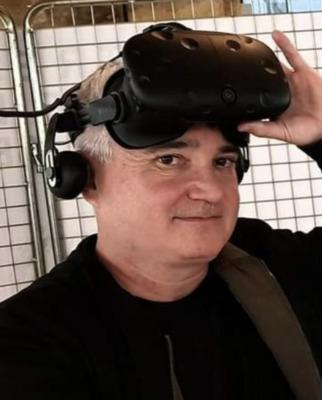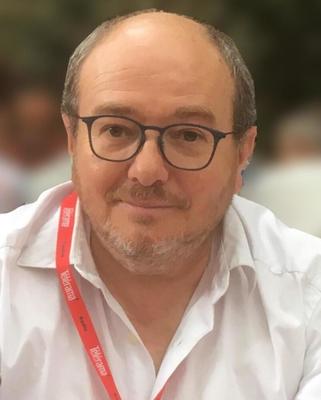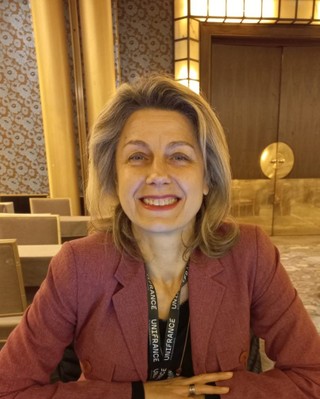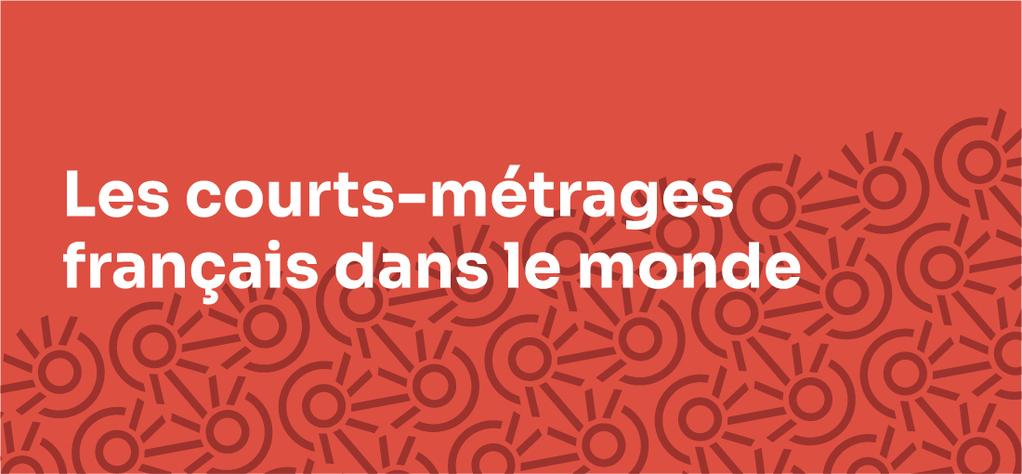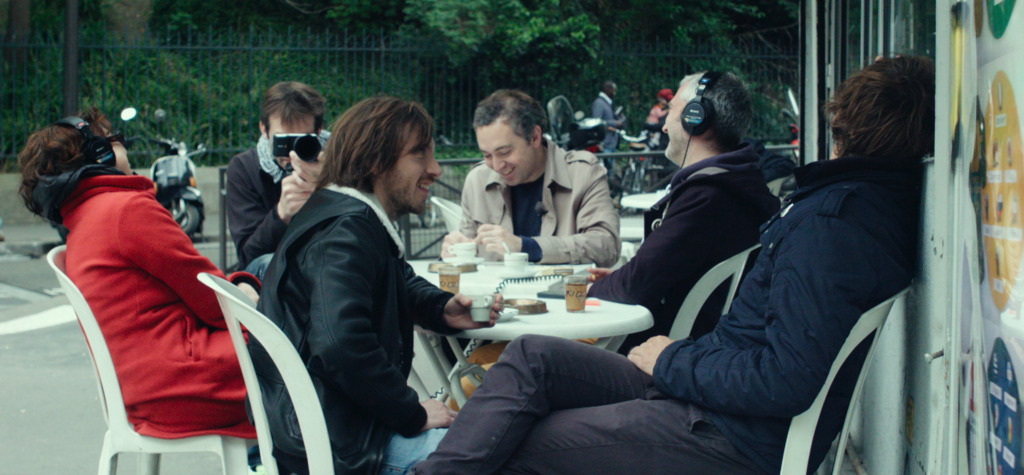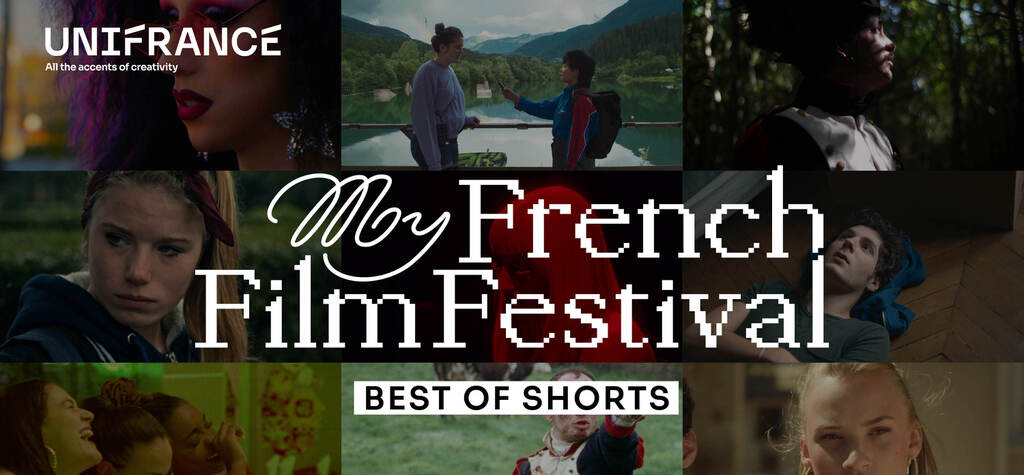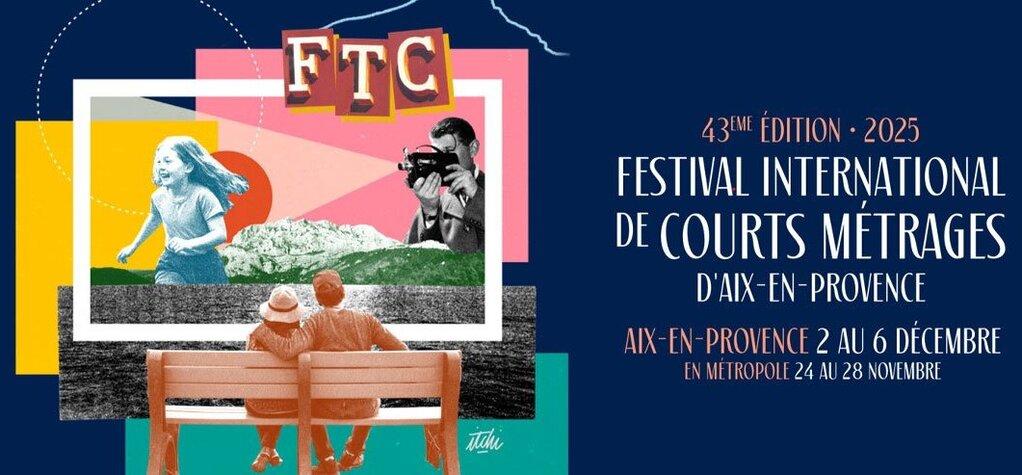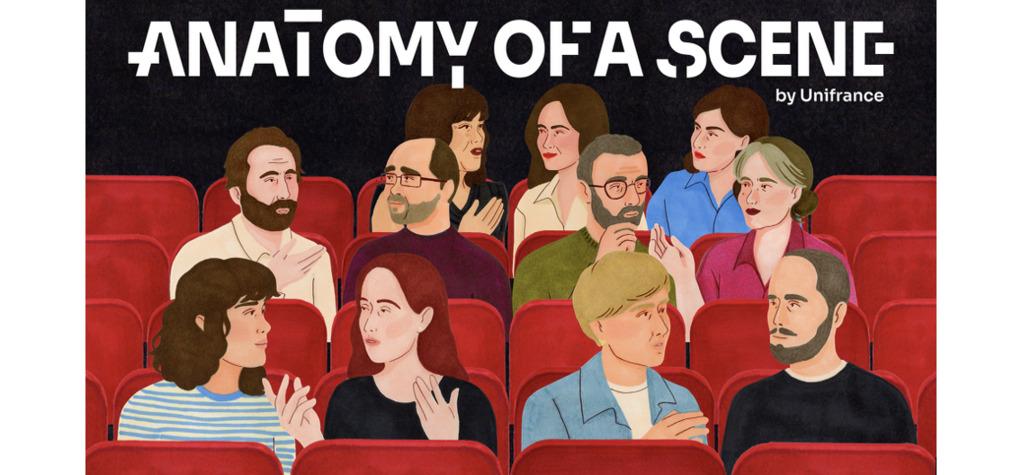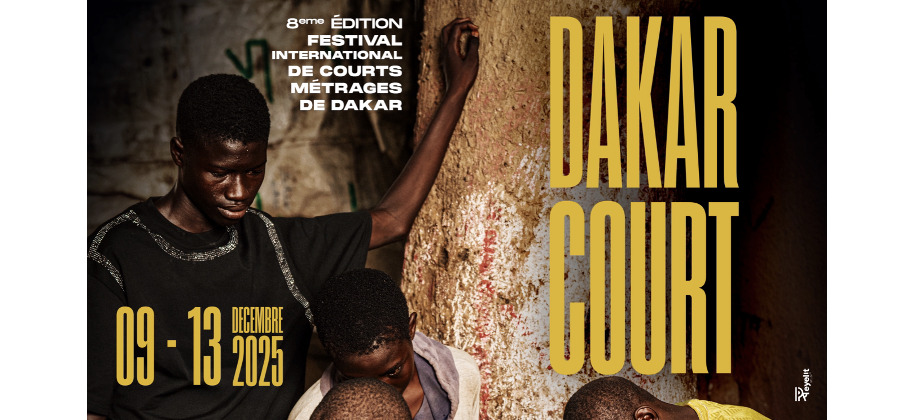The documentary The Cloisters Odyssey invites audiences to explore the extraordinary history of the cloisters of Occitania through the eyes of “antique hunter” George Grey Barnard, whose collection of artworks contributed greatly to the creation of the Met Cloisters, the medieval wing of New York's Metropolitan Museum of Art.
Distributed by Script Line and produced by Passé Simple, in partnership with UNESCO, this ambitious film combines historical research and technological innovation, notably through previously unseen archives and 3D reconstructions.
Gini Lorin, Head of International Distribution at Script Line, explains the genesis and international dimension of this documentary, which aims to highlight the riches of medieval heritage around the world.
Unifrance: How did this documentary project come about? Why did you decide to distribute it internationally?
Gini Lorin: Marc Azema, author and director, discovered the existence of the Met Cloisters – the medieval wing of New York's Metropolitan Museum of Art – over 35 years ago, when he was an art history student. This museum, in the shape of a Pyrenean abbey, is entirely structured around four cloisters that traveled from the south of France, more precisely from the Occitania-Pyrénées-Mediterranean region! A few years later, having become a filmmaker specializing in the heritage sector, the idea of making a documentary recounting the odyssey of these cloisters developed during several trips to New York. These successive scouting trips enabled Azema to refine his project and meet the curators on site. 2025 will mark the culmination of these 30 years of reflection and maturation, with delivery of the film scheduled for June this year.
I'm originally from Toulouse. So the subject is particularly close to my heart.
It was Toulouse producer and director Francis Fourcou who put me in touch with Marc Azéma. That's how I got involved in the project. I'm also the distributor of the documentary Wibaux Wanted, which I sold across the Atlantic to three PBS channels between 2023 and 2024. Two new channels are part of my 2025 objectives. In this way, I've been able to establish a connection with American broadcasters and enter this hard-to-access market.
The Cloisters Odyssey is of interest to the international market due to its scientific approach, using cutting-edge 3D reconstruction techniques. The digitization work carried out over many years by the experts at the CNRS MAP laboratory (who worked on the reconstruction of Notre-Dame) served as the basis for the film team's reconstruction of the Occitania cloisters: a first in the field!
What's more, art is universal. Telling the story of a museum located in a city that attracts visitors from all over the world is particularly exciting, especially as it is linked to the Metropolitan Museum, one of the world's largest and most prestigious museums. When I present the project to buyers, “fascinating” is the word that comes up most frequently.
The film can also be an educational tool, as it is based on historical research collected by the film's three partners: Passé Simple, the MAP laboratory, and the Met Cloisters. Azéma has called on a wide range of specialists: a specialist in the story of George Grey Barnard, who initiated the Cloisters journey, art historians specializing in medieval art, the curators of the Occitania cloisters, the Bonnefont-en-Comminges tour guide/lecturer, scientists, the DRAC Occitanie, restorers and, of course, the Met Cloisters curators. All these contributions will provide a comprehensive overview of the history of this museum.
Can you sum up this ambitious film, set between France and the USA, in a few lines?
GL: The film recounts the extraordinary adventure of the cloisters of Saint-Guilhem-le-Désert (Hérault), Saint-Michel de Cuxa (Pyrénées-Orientales), Bonnefont-en-Comminges (Haute-Garonne), and Trie-sur-Baïse (Hautes-Pyrénées), from their journey from France to their reconstruction on the other side of the Atlantic, in New York.
It's a journey through time that introduces us to “antique hunter” George Grey Barnard, an American sculptor with a passion for medieval art who became an art dealer. In the form of animated sequences, we accompany him at the very beginning of the 20th century as he collects fragments from cloisters left abandoned and plundered for centuries. It was this collection that led to the construction of today's Met Cloisters, inaugurated on May 10, 1938. In the last part of the film, thanks to 3D computer-generated images, we return to France and witness the virtual reconstruction of the cloisters of the abbeys of Saint-Guilhem-le-Désert and Saint-Michel de Cuxa, as they were in the Middle Ages and as Barnard must have dreamed them.
The story is told through the eyes of George Grey Barnard…
GL: It was indeed the wish of this eminent American sculptor that the fragments of these cloisters were collected and preserved between 1906 and 1913. Based in Paris, Barnard specialized in researching medieval art objects. This was all the easier at a time when Europeans somewhat neglected this heritage, partly ruined by the Wars of Religion. At the time, the French state did not yet have the resources it does today to protect this heritage.
Barnard built up a fine personal collection, which he hoped would one day interest New York's Metropolitan Museum of Art. 120 crates containing 700 pieces of medieval art arrived in New York in early January 1914. Barnard stored them in Fort Tyron Park, north of Manhattan. Near his studio, he had a temporary museum built to display his collection, Barnard's Cloisters. It opened its doors on Christmas 1914 and became the first museum of medieval art in America, enjoying immediate success. No longer in existence, Barnard's Cloisters will be reconstructed in 3D computer-generated images in the film, thanks to archive documents and the work of Passé Simple's computer graphics team.
2025 has a very special significance, because one hundred years ago, in 1925, John D. Rockefeller Jr. made a decisive contribution by purchasing Barnard's art collection. He then bequeathed it to The Met, and this gift enabled the construction of the current Met Cloisters, which will commemorate this centenary in June 2025. The film will connect with this event in a number of ways, including a virtual tour of the vanished museum, Barnard's Cloisters, the main subject of the exhibition associated with the event.
The film is a hybrid documentary, combining archives, reconstructions, 3D, animation…
GL: The animated sequences bring to life Barnard, of whom only a few archive photos remain, as well as other key players in the film. This reconstruction was carried out using a combination of AI-developed 2D and 3D animation techniques (to show him moving about in the various sites). Most of Barnard's journeys in the past are presented from a subjective viewpoint. His quest is narrated in voice-over, and is based on an adaptation of the writings and letters collected by historians.
As for the settings, they are shown in a variety of ways: old photographs treated via camera mapping (to restore their depth), video shots of current sites treated with matte painting, recreation of the four cloisters in 3D to show them as they were at the time when Barnard explored them, but also in the Middle Ages.
Alongside this narrative arc, the film is enriched by sequences featuring contributions from specialists (archaeologists, art historians, French curators, and Met Cloisters curators), who provide information both about Barnard's career and its context (the art market at the beginning of the 20th century, protection of Historic Monuments, negotiations with John D. Rockefeller, Met Cloisters construction projects, the problems of reassembling the cloisters in the United States, etc.).
Recent events complete the story of the cloisters: the discovery of lost capitals at Saint-Guilhem-le-Desert, the mysterious donation of fragments at Cuxa, and the restoration of a cloister in Tarbes, rebuilt in part like the New York clones of Trie and Bonnefont.
How did you convince the project's partners, in particular UNESCO?
GL: When I read the project brief, and after several discussions with Marc Azéma, I thought that this film would help to promote a priceless heritage, so I contacted UNESCO.
I'd already had a first encounter with UNESCO, which devoted an evening to the film Collision in September 2023, a film that I sold to Arte.tv and which highlights the intensity of international maritime traffic and its dangers for whales. I am honored to have enabled the film to receive the patronage of the French National Commission for UNESCO. This support is particularly valuable at an international level.
The DRAC Occitanie, Région Occitanie, several départements and town communities, as well as the owners of the associated cloisters and abbeys, also supported the project. VIA Occitanie and Histoire TV will be the film's first broadcasters. Foreign buyers who viewed the first images of the Barnard's Cloisters restoration were impressed by the quality of the works.
Thanks to MAP's work, Occitania's cloisters will be showcased through their reconstruction. Passé Simple will recreate Barnard's Cloisters, which no longer exist. Yet it was this place that housed all the relics and attracted Rockefeller's attention! It is therefore of exceptional value. The film will finally immortalize it and enable all audiences to discover the history of the Met Cloisters
Are you targeting a specific audience?
GL: We're aiming for a broad audience, curious about works devoted to art, architecture, culture, art history, and heritage. People who have already visited the Met Cloisters and who want to know more about its history. The film will inspire those who discover it to visit the Cloisters one day. Barnard's fascinating and endearing character opens up the story and makes it accessible to a wide range of people.
Was the project conceived with the international market in mind from the outset?
GL: The project was indeed conceived with a view to an international audience from the start. In fact we filmed the Met Cloisters curators' contributions directly in English on location. These parts in English will be dubbed for French-speaking broadcasters. The same applies to the French participants in the international version. Voice-overs will also be recorded in French and English.
I am in discussion with international broadcasters for pre-acquisitions, and of course remain available to present the project to new buyers.
In what way can the documentary arouse the interest of international audiences ?
GL: We've noted the passion generated by the preservation of Notre-Dame in Paris. The fire revealed the strong ties we have with the heritage bequeathed to us by our builder ancestors. Numerous documentaries on the construction and reconstruction work show the interest of international broadcasters in this heritage. The Cloisters Odyssey is exactly in line with this approach to preserving and promoting the priceless heritage of the Middle Ages.
The Met Cloisters is located in New York, a very international city that attracts many tourists from all over the world. So there's a definite international potential. This tale also underlines the universal aspect of art, with a fine international collaboration, and the very strong ties that unite France and the United States, which delight me in every one of my exchanges with our American partners.










